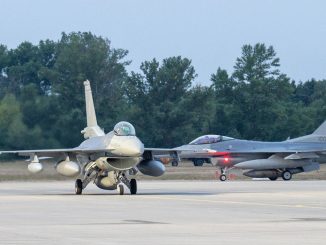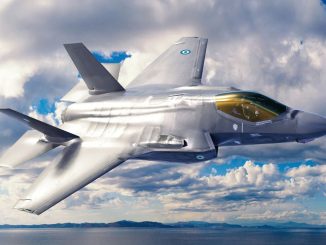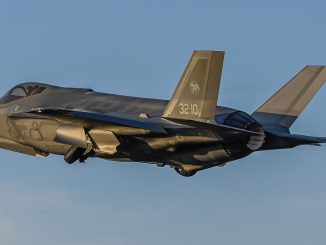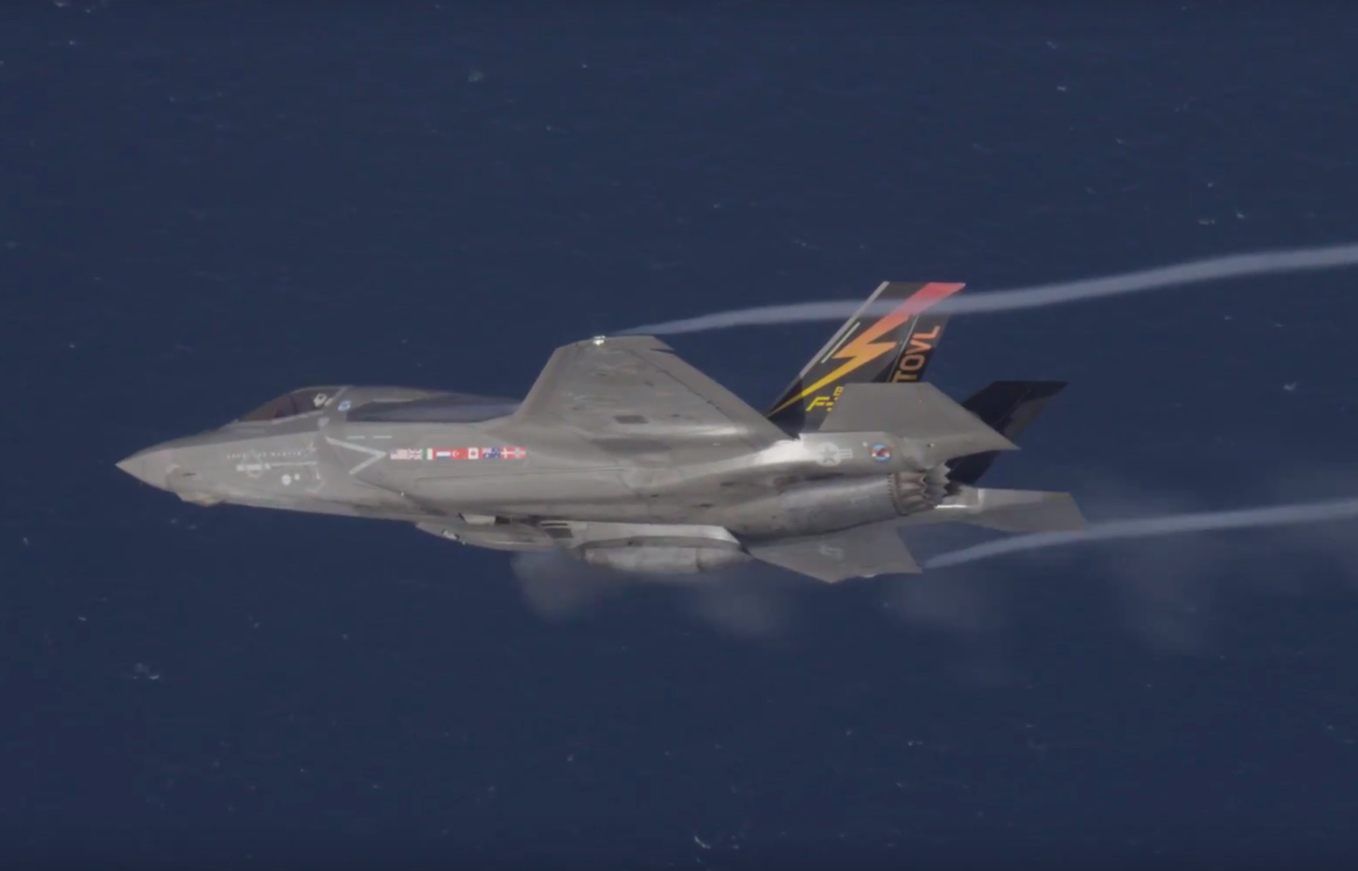
New Caliber Gun Provides Close Air Support Capability for U.S. Marines.
The U.S. Marine Corps Lockheed Martin F-35B Lightning II Joint Strike Fighter has completed the test firing of its externally mounted General Dynamics GAU-22 25mm gun pod.
The final aerial test firing took place on May 8, 2017 and was conducted by The Salty Dogs of Air Test and Evaluation Squadron (VX) 23’s Integrated Test Force (ITF) at Naval Air Station (NAS) Patuxent River.
Of particular interest in the video just released (that includes footage from several different sorties) is the variety of additional external stores carried on the test F-35Bs. The aircraft are shown with a version of the AIM-9X Sidewinder air-to-air missile and, in a separate flight, with what appears to be a 500lb laser guided bomb possibly a version of the GBU-12 Paveway II.
The new General Dynamics GAU-22 25mm gun pod uses a unique four-barrel configuration that was developed from the highly successful five-barrel, 25mm GAU-12/U gun also built by General Dynamics. The new GAU-22 gun, carried internally on the USAF F-35A variant and in the external pod for the U.S. Marines’ F-35B is and U.S. Navy F-35C is more than 40 pounds lighter and requires 20 percent less overall space than the earlier GAU-12, 5-barrel 25mm gun. The new GAU-22 weapon has a reported rate of fire of “up to 3,300 rounds per minute”. The rate of fire of aerial guns is often reported as “up to…” since the gun can take several seconds to achieve its maximum rate of fire because of the weight of the rotating gun barrels.
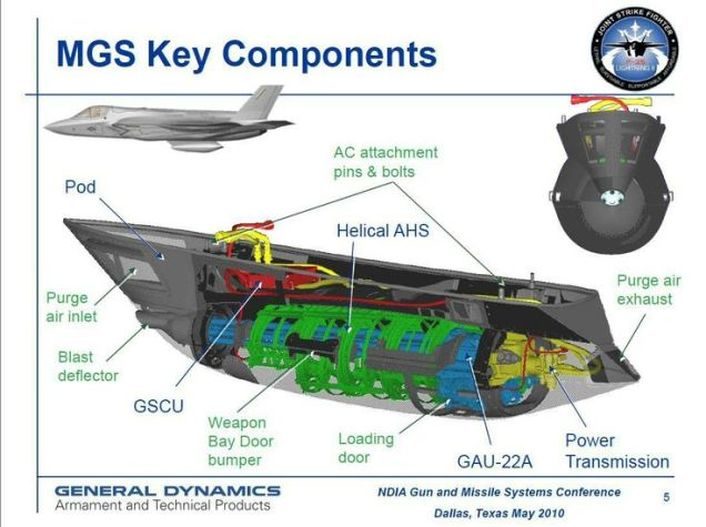
The successful in-flight test firing of the 25mm gun pod (started at the end of February), specifically on the U.S. Marine Corps F-35B, somehow addresses questions over the F-35 program’s ability to perform the close air support mission. Several analysts have expressed concern over whether the F-35 is suited for the close air support mission and is a suitable substitute for the CAS-specific A-10 Warthog.
Generally speaking it’s wrong to compare the F-35 with any other asset that was designed to perform a specific mission: the A-10 was built around a unique 30mm cannon nearly as long as the aircraft’s entire fuselage that was intended for the anti-armor close air support (CAS) mission.
While this initial test-firing does not resolve questions surrounding all of the F-35B’s close air support capabilities it is another successful step forward in the program’s progress. At least it can use the gun if called into action during a CAS mission!
The F-35 GAU-22/A gun has been among the most controversial topics: some criticised the fact that the Joint Strike Fighter’s gun can only hold 181 20mm rounds, fewer than the A-10 Thunderbolt’s GAU-8/A Avenger, that can hold some 1,174 30mm rounds.
Moreover, although it was designed with LO (Low Observabity) characteristics, the external pod degrades the F-35’s radar cross section making the 5th generation aircraft more visibile to radars. Still, this should be acceptable for the scenarios where the U.S. Marine Corps F-35B will be called to carry out CAS missions.

